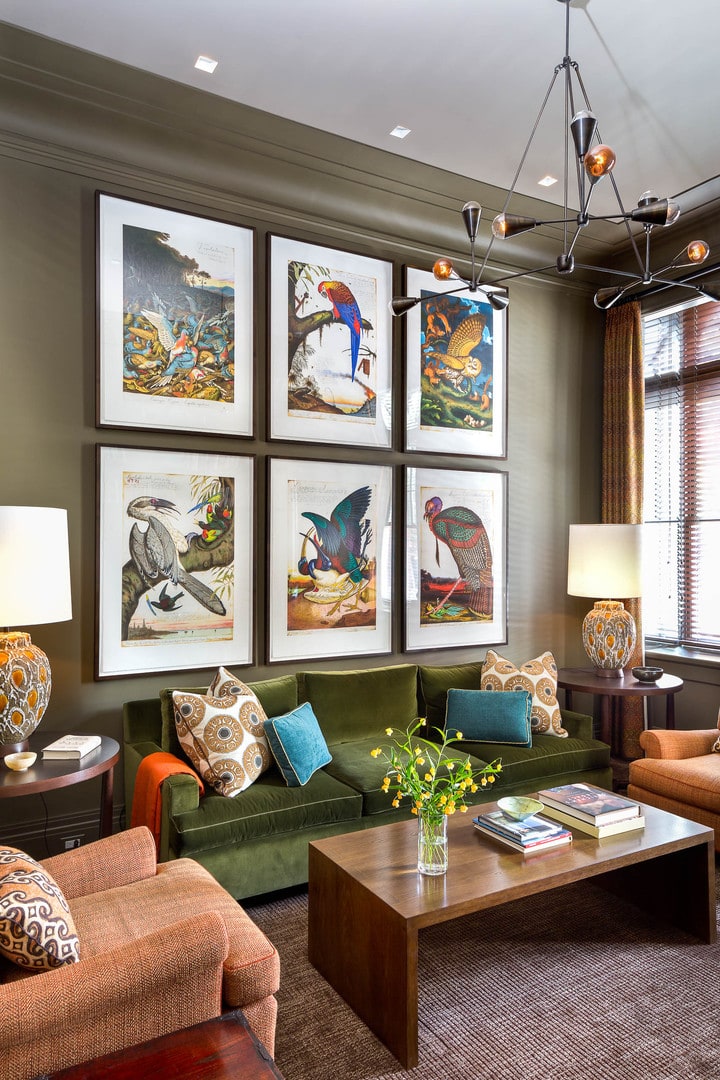
In this sitting room, a series of large Walton Ford editions are installed in a grid on the rich green-brown walls. The pair of vintage 1970’s table lamps are the perfect complement to the tailored upholstery in a warm mix of deep browns, greens, and oranges.
In interior design, every surface is important, but the alchemy of design comes into play when designers introduce and orchestrate fine art and objects, humble or precious, simple or ornate.
Speaking personally, art in the interior is the great transformer, the secret formula for achieving superlative design. It’s a subject I examined in detail in Carl Dellatore’s best-seller Interior Design Master Class. In the excerpts below, I share what I consider to be the 5 rules to consider when placing art in an interior.
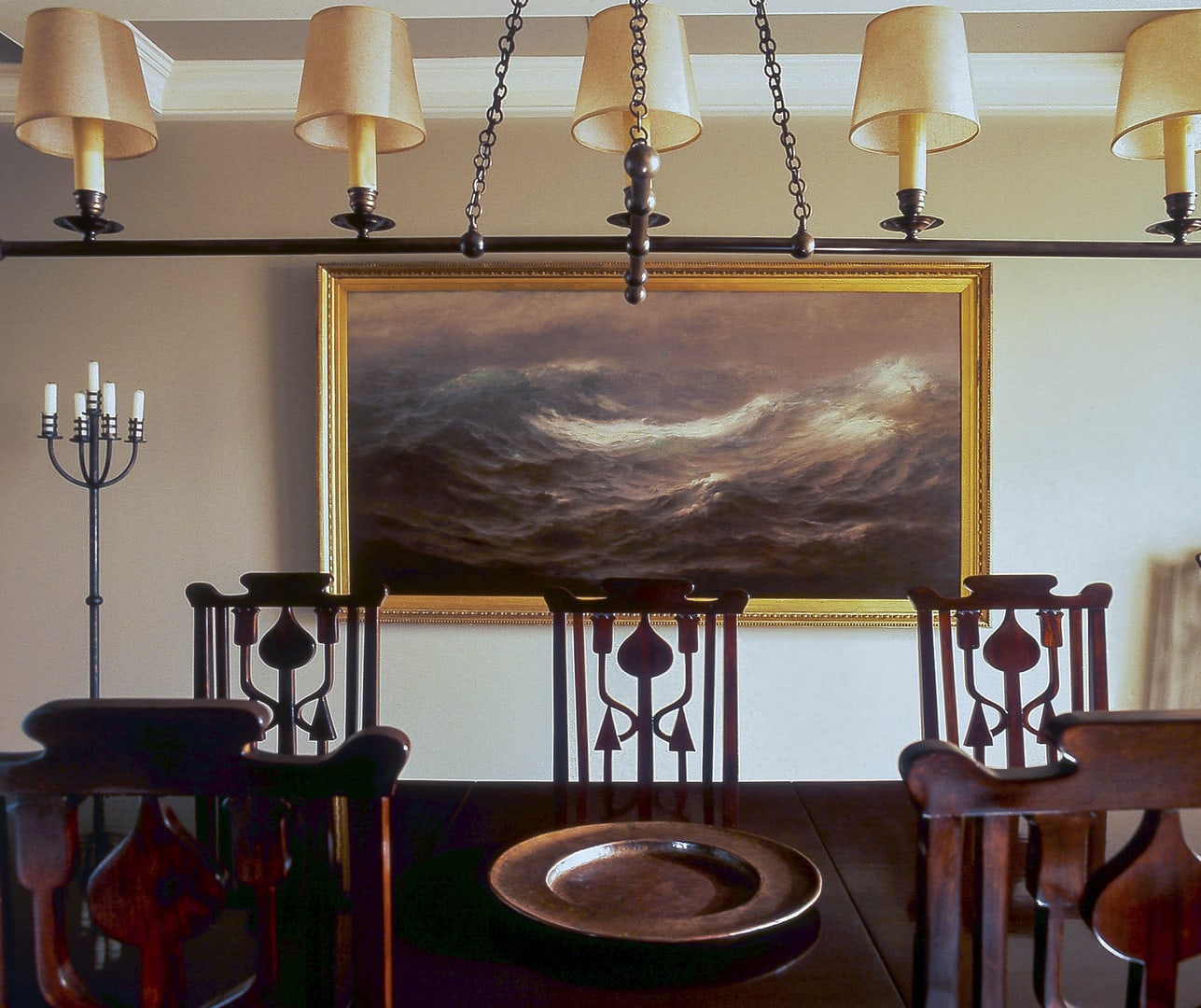
Stunning Arts & Crafts chairs from Newel Art Galleries with splats formed like arrows and spades, while a mysterious, moody seascape painting and abundant low lighting–designed by us–create an atmosphere in this dining room that seems of another time and place.
PLACEMENT
The selection and placement of art in an interior is extremely important, possibly the single most important decision you will make. And it’s important to remember you can rearrange things almost infinitely, creating fresh, startling design perspectives and tableaux.
The talismanic power of an object may be enhanced by surprising adjacencies and new positions. The whole, forged by the intuitive selection and arrangement of objects in an interior, is exponentially greater than the sum of its parts.

In this living room the curves of the Danish Modern rosewood pedestal table, the Frank Gehry Wiggle Chair, and Herve van der Straeten’s “Tornade” lamp combine to create an arresting tableau.
JUXTAPOSITION
I often assist my clients in purchasing art–in some cases forming the nucleus of a collection–and I emphasize to them how important it is to mix things of great value with other kinds of artifacts. I encourage clients to buy the very best art and objects they are willing to afford, but caution that if everything they purchase is at the highest level, the provocative potential–the poetry– of juxtaposition is neutralized.
In popular decorating terms, this is referred to as ‘High/Low’. You should never be afraid to mix humble art and objects with those with greater value or provenance.
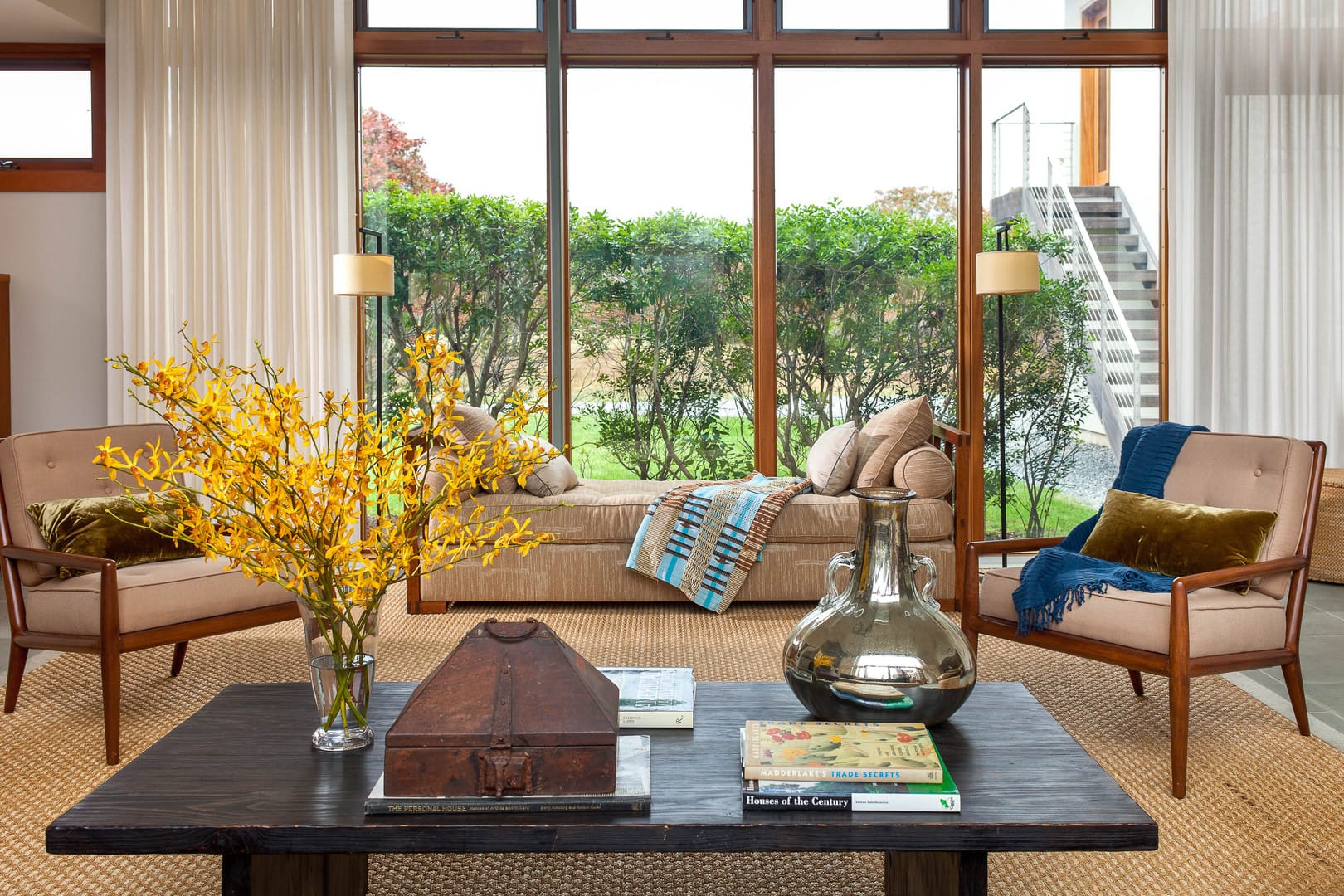
In the living room, the massive Japanese-inspired coffee table, by Tucker Robbins, sets the tone for rugged elegance. Towering glass walls and doors are curtained in Perennials fabric from Boston-based Finelines. The Studio sofa, designed by Thomas O’Brien for Hickory Chair, is upholstered in “Meru”, a Sunbrella fabric from Donghia, as durable as it is appealing.
ESTABLISHING VALUE
Art and objects alone do not make the room, although they may ignite its magic. The culmination of all the endless design decisions can create the most perfectly understated background, giving the illusion that nothing was done, neither heavyhanded nor weak.
Designers must learn to distribute resources toward design alchemy, a process that need not be enormously costly, but may pay great dividends to the client in the future in terms of increased value. But this is merely a fringe benefit: the presence of art creates an added value you cannot quantify. Clients of relatively modest circumstances may be willing to spend a surprising proportion of their money on art and objects simply because they perceive their incalculable aesthetic–and even spiritual–value in the interior.
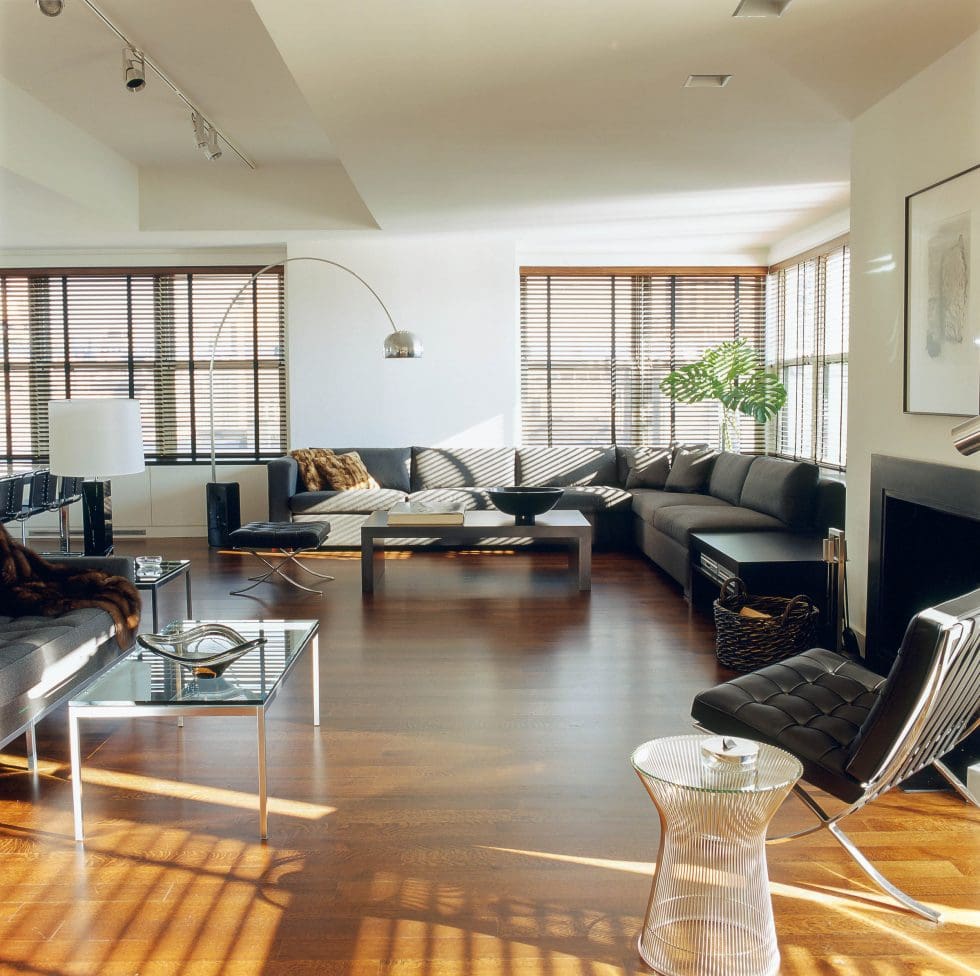
A spacious orchestration of mid-century classics marks the living room. At left, is a suite of Florence Knoll furniture: the tufted sofa, a rectangular coffee table with satin chrome base, and chrome and clear glass side table. At right, Ludwig Mies van der Rohe’s famous Barcelona Chair and Stool, c. 1929 and Warren Platner’s silvery side table.
ENCOURAGING DISCOVERY
Everyone seeks rooms that are inviting and pleasurable, designed for living life in all its complexity and depth. Art and objects may cause a visitor to pause; they may at the same time prompt an inhabitant to see a new visual relationship, undiscovered before.
Speaking personally, I often move the objects and artworks in my homes around, which gives me pause to reflect and discover the shapes and forms in new ways. The bones of an interior may be static, but the objects in a room should be variable and dynamic, much like the lives we live in them.
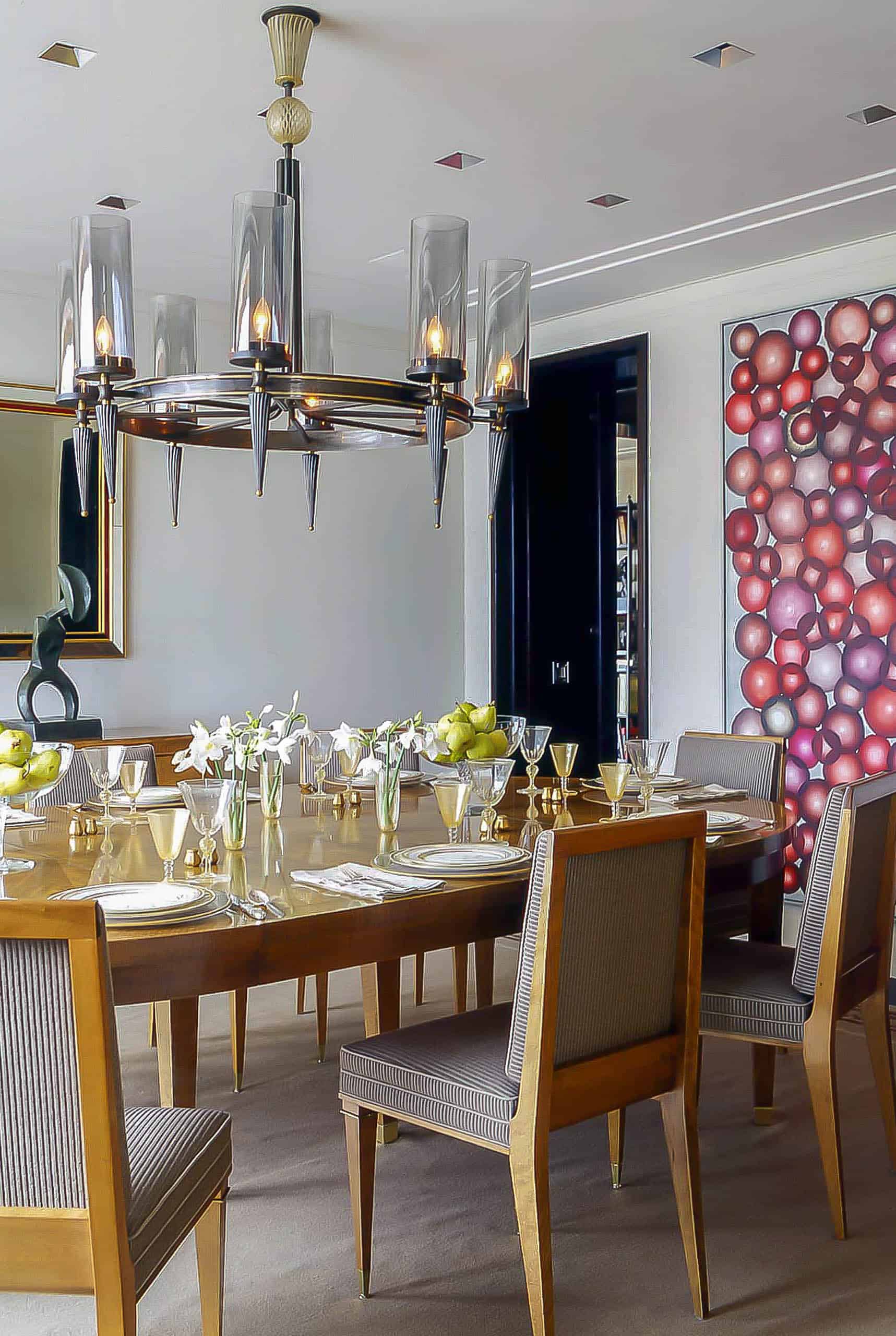
In the dining room, 1930s Jules Leleu chairs circle a custom oval table. The French forties bronze chandelier complements a Max Ernst figure, also in bronze; the painting is Ross Bleckner’s Flow and Return (2001).
CREATING “HOME”
Designers must determine the history, values, and ambitions of the client and then find a visual vocabulary for its expression, achieving an interiority that is both visually and psychologically meaningful. And while architectural detailing, finishes, and materials all play into the equation, it’s the orchestrating and placement of art and objects that create the ultimate sense of home.
